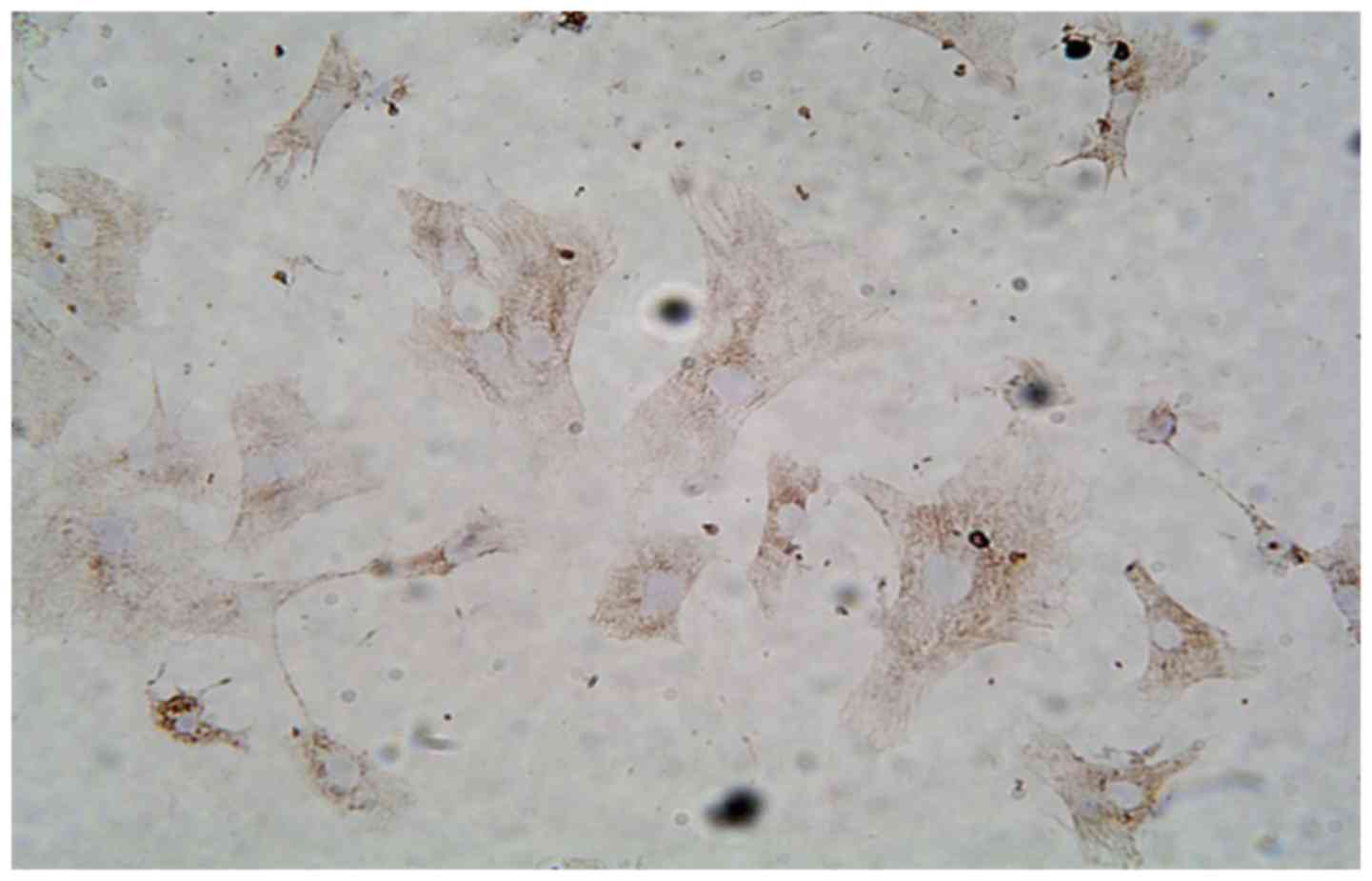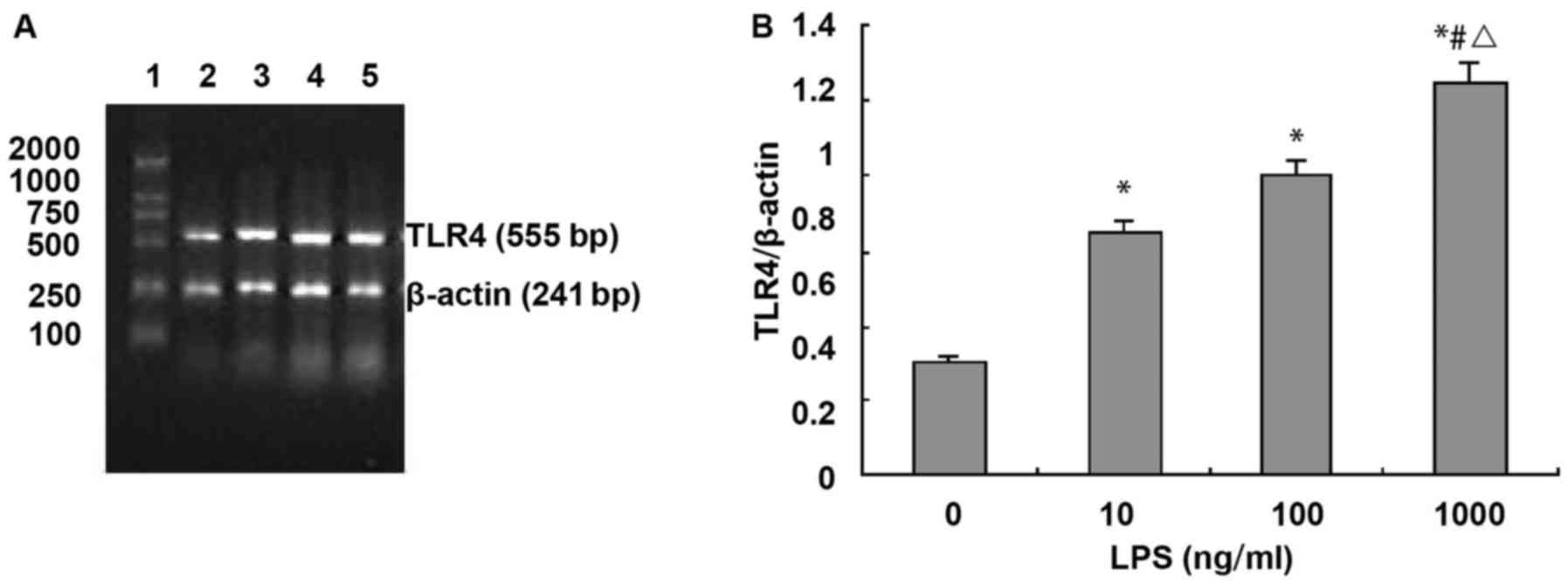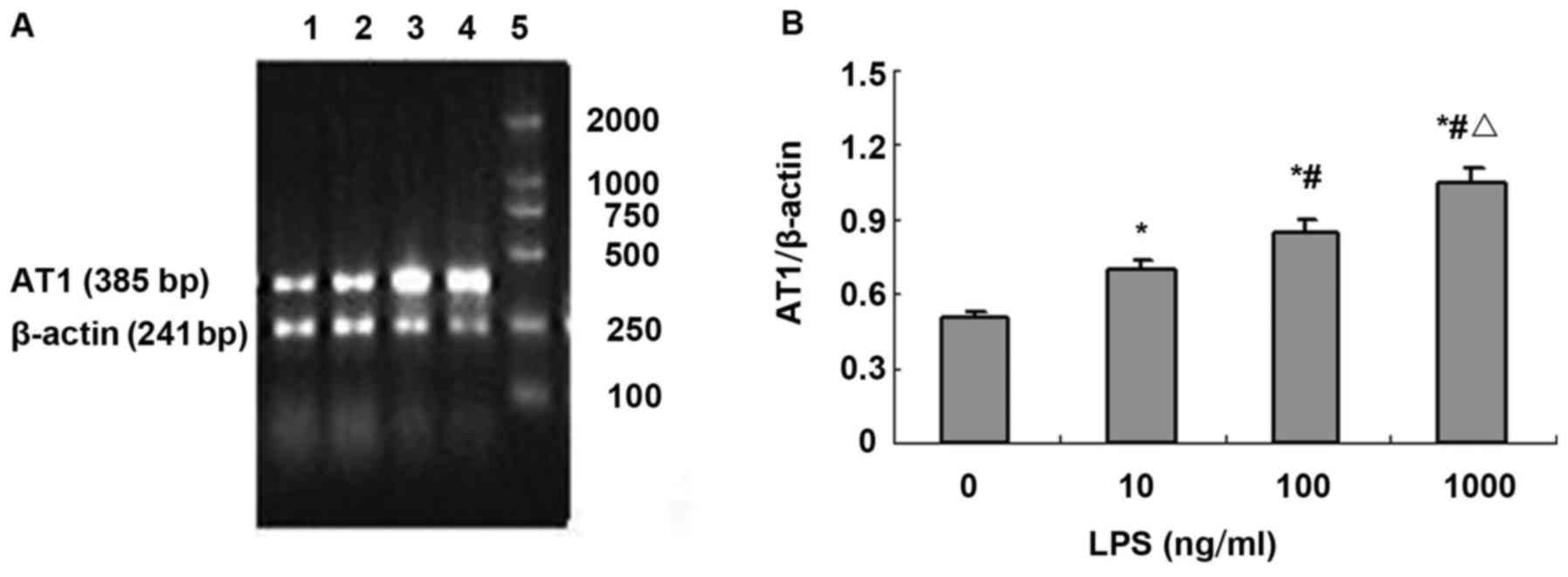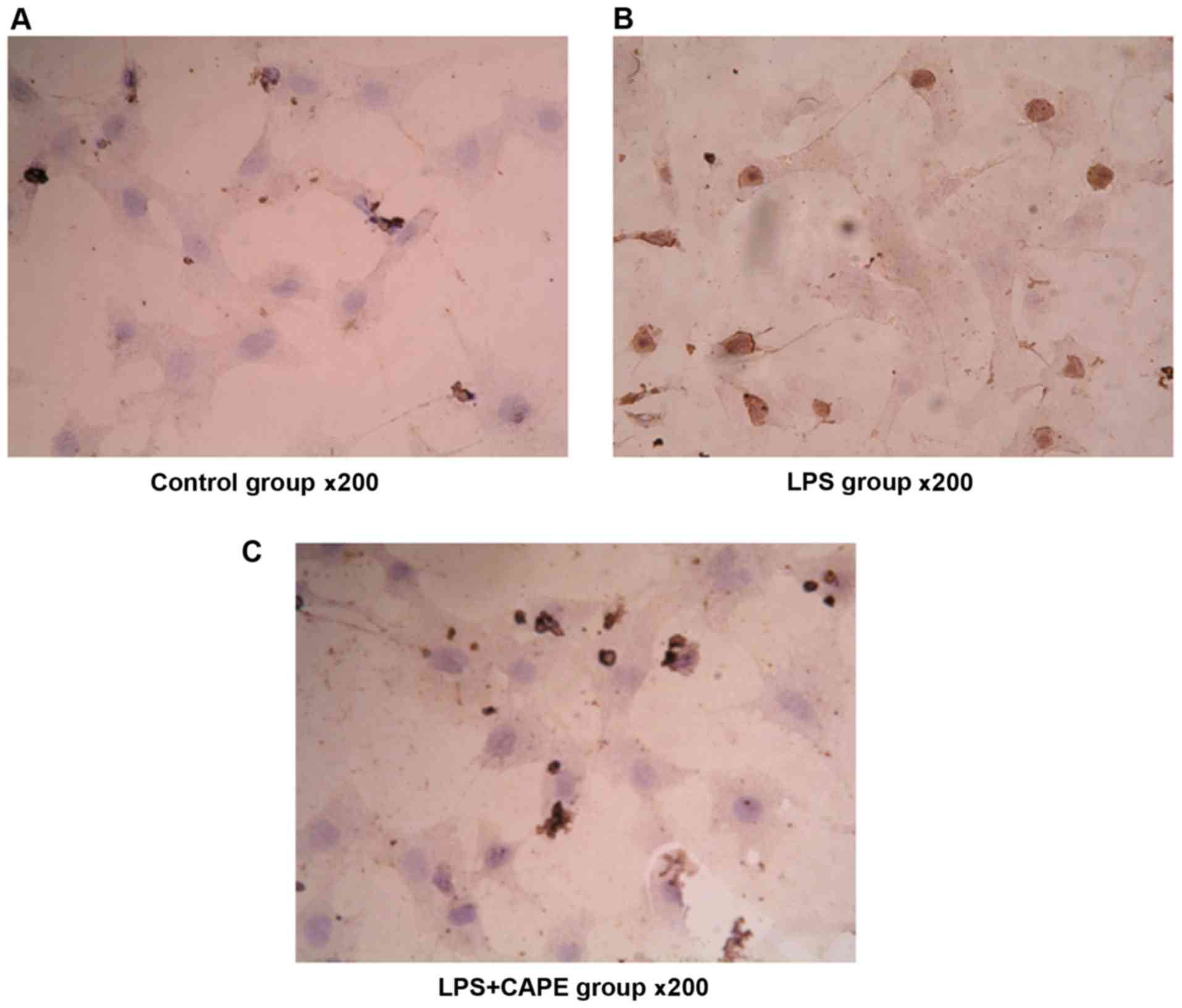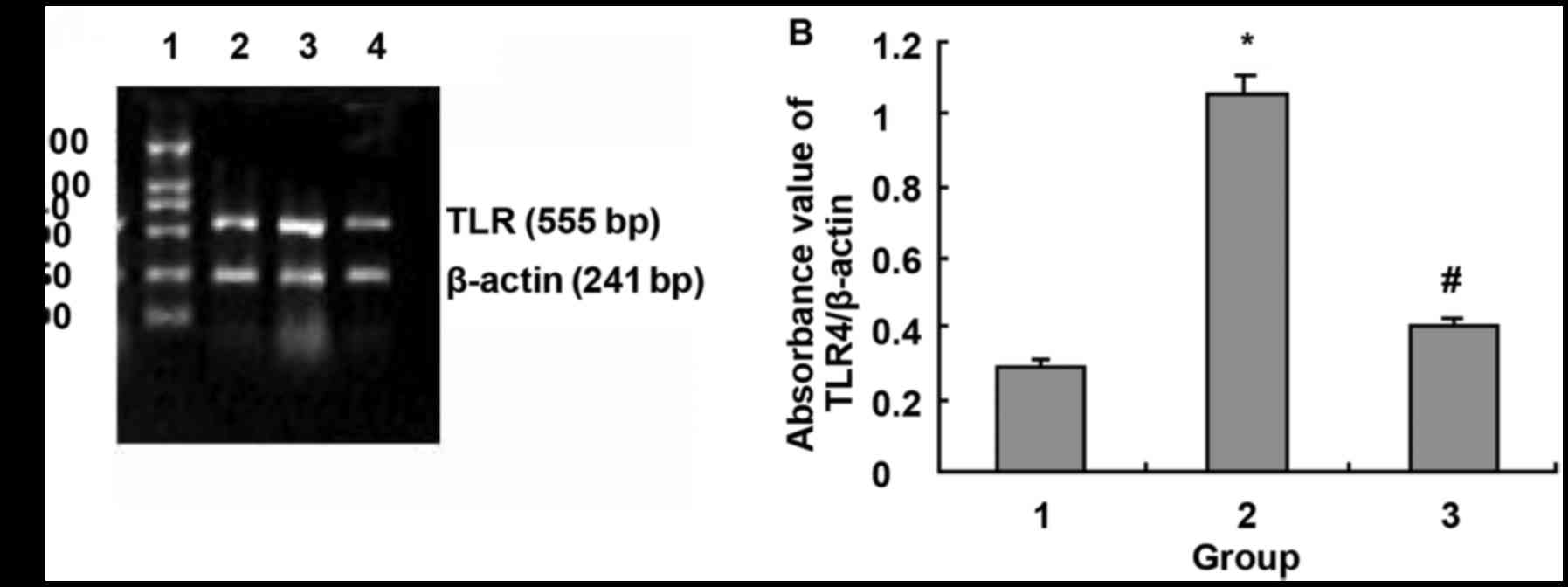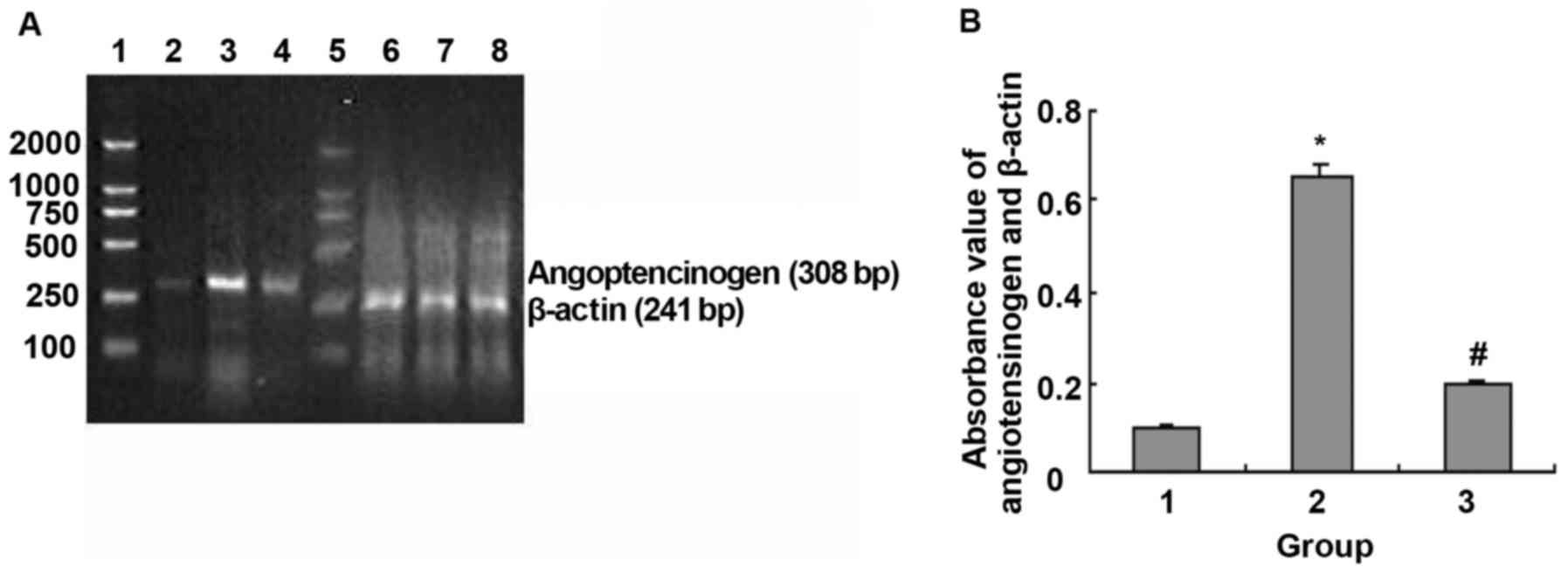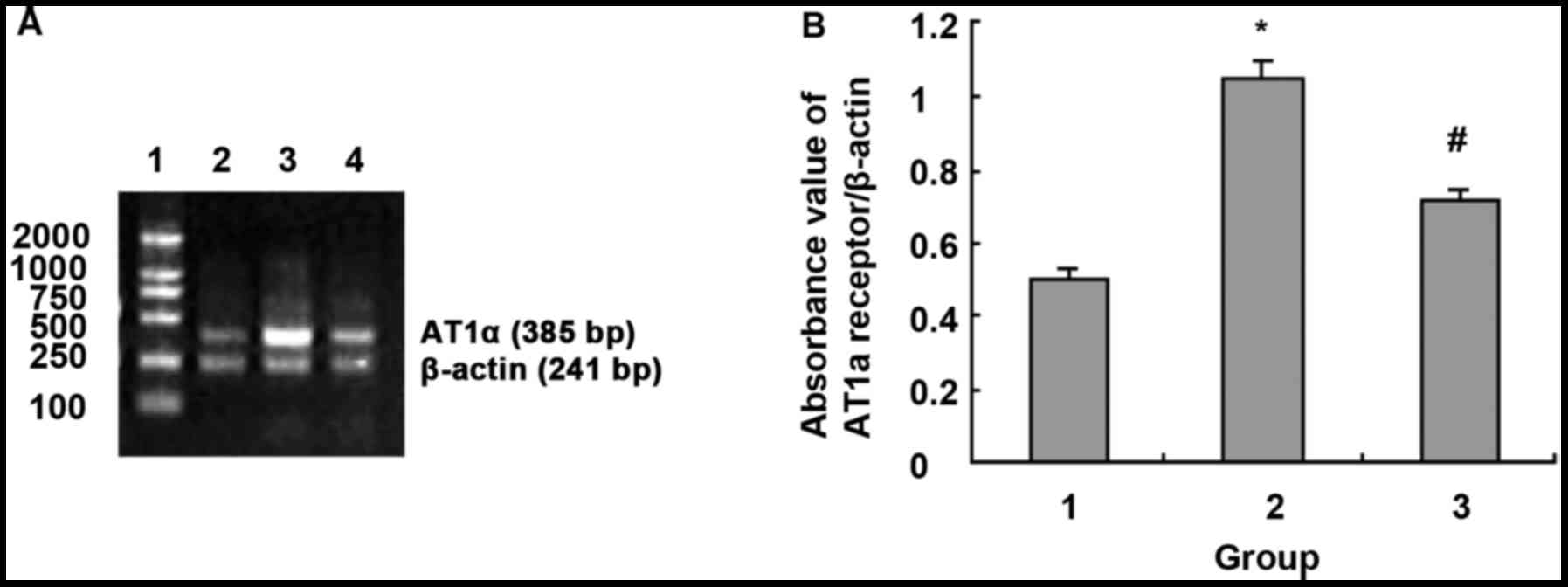|
1
|
Medzhitov R, Preston-Hurlburt P and
Janeway CA Jr: A human homologue of the Drosophila Toll
protein signals activation of adaptive immunity. Nature.
388:394–397. 1997. View
Article : Google Scholar : PubMed/NCBI
|
|
2
|
Frantz S, Kobzik L, Kim YD, Fukazawa R,
Medzhitov R, Lee RT and Kelly RA: Toll4 (TLR4) expression in
cardiac myocytes in normal and failing myocardium. J Clin Invest.
104:271–280. 1999. View
Article : Google Scholar : PubMed/NCBI
|
|
3
|
Liu L, Wang Y, Cao ZY, Wang MM, Liu XM,
Gao T, Hu QK, Yuan WJ and Lin L: Upregulated TLR4 in cardiomyocytes
exacerbates heart failure after long-term myocardial infarction. J
Cell Mol Med. 19:2728–2740. 2015. View Article : Google Scholar : PubMed/NCBI
|
|
4
|
Yang Y, Lv J, Jiang S, Ma Z, Wang D, Hu W,
Deng C, Fan C, Di S, Sun Y, et al: The emerging role of Toll-like
receptor 4 in myocardial inflammation. Cell Death Dis. 7:e22342016.
View Article : Google Scholar : PubMed/NCBI
|
|
5
|
Ehrentraut H, Ehrentraut Felix S, Boehm O,
El Aissati S, Foltz F, Goelz L, Goertz D, Kebir S, Weisheit C, Wolf
M, et al: Tlr4 deficiency protects against cardiac pressure
overload induced hyperinflammation. PLoS One. 10:e01429212015.
View Article : Google Scholar : PubMed/NCBI
|
|
6
|
Ha T, Li Y, Hua F, Ma J, Gao X, Kelley J,
Zhao A, Haddad GE, Williams DL and Browder William I: Reduced
cardiac hypertrophy in toll-like receptor 4-deficient mice
following pressure overload. Cardiovasc Res. 68:224–234. 2005.
View Article : Google Scholar : PubMed/NCBI
|
|
7
|
Ferrario CM: Cardiac remodelling and RAS
inhibition. Ther Adv Cardiovasc Dis. 10:162–171. 2016. View Article : Google Scholar : PubMed/NCBI
|
|
8
|
Li HL, Suzuki J, Bayna E, Zhang FM, Dalle
Molle E, Clark A, Engler RL and Lew WY: Lipopolysaccharide induces
apoptosis in adult rat ventricular myocytes via cardiac AT(1)
receptors. Am J Physiol Heart Circ Physiol. 283:H461–H467. 2002.
View Article : Google Scholar : PubMed/NCBI
|
|
9
|
Abareshi A, Norouzi F, Asgharzadeh F,
Beheshti F, Hosseini M, Farzadnia M and Khazaei M: Effect of
angiotensin-converting enzyme inhibitor on cardiac fibrosis and
oxidative stress status in lipopolysaccharide-induced inflammation
model in rats. Int J Prev Med. 8:692017. View Article : Google Scholar : PubMed/NCBI
|
|
10
|
Tapping RI, Akashi S, Miyake K, Godowski
PJ and Tobias PS: Toll-like receptor 4, but not toll-like receptor
2, is a signaling receptor for Escherichia and
Salmonella lipopolysaccharides. J Immunol. 165:5780–5787.
2000. View Article : Google Scholar : PubMed/NCBI
|
|
11
|
Cervenka L, Vanecková I, Husková Z,
Vanourková Z, Erbanová M, Thumová M, Skaroupková P, Opocenský M,
Malý J, Chábová VC, et al: Pivotal role of angiotensin II receptor
subtype 1A in the development of two-kidney, one-clip hypertension:
Study in angiotensin II receptor subtype 1A knockout mice. J
Hypertens. 26:1379–1389. 2008. View Article : Google Scholar : PubMed/NCBI
|
|
12
|
Boza P, Ayala P, Vivar R, Humeres C,
Cáceres FT, Muñoz C, García L, Hermoso MA and Díaz-Araya G:
Expression and function of toll-like receptor 4 and inflammasomes
in cardiac fibroblasts and myofibroblasts: IL-1β synthesis,
secretion, and degradation. Mol Immunol. 74:96–105. 2016.
View Article : Google Scholar : PubMed/NCBI
|
|
13
|
Jones WK, Brown M, Ren X, He S and
McGuinness M: NF-kappaB as an integrator of diverse signaling
pathways: The heart of myocardial signaling? Cardiovasc Toxicol.
3:229–254. 2003. View Article : Google Scholar : PubMed/NCBI
|
|
14
|
An H, Yu Y, Zhang M, Xu H, Qi R, Yan X,
Liu S, Wang W, Guo Z, Guo J, et al: Involvement of ERK, p38 and
NF-kappaB signal transduction in regulation of TLR2, TLR4 and TLR9
gene expression induced by lipopolysaccharide in mouse dendritic
cells. Immunology. 106:38–45. 2002. View Article : Google Scholar : PubMed/NCBI
|
|
15
|
Harju K, Ojaniemi M, Rounioja S, Glumoff
V, Paananen R, Vuolteenaho R and Hallman M: Expression of toll-like
receptor 4 and endotoxin responsiveness in mice during perinatal
period. Pediatr Res. 57:644–648. 2005. View Article : Google Scholar : PubMed/NCBI
|















